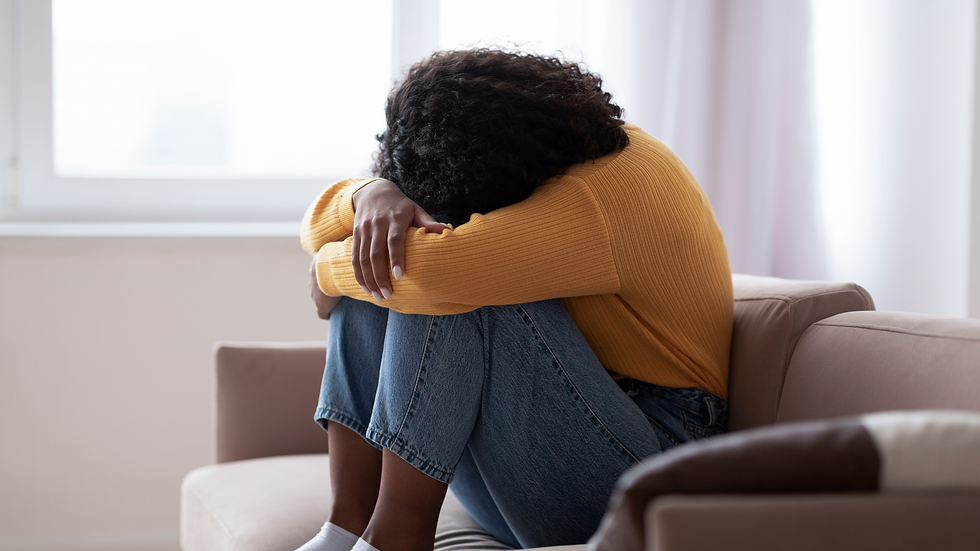Burnout in BIPOC Communities: Why It Happens and How to Interrupt the Burnout Cycle
- Wellness Tree Counseling Team

- Jul 18
- 3 min read
Have you ever felt like you’re constantly pushing but never arriving—like rest is something you have to earn? For many BIPOC professionals, this isn’t just exhaustion. It’s burnout—and it runs deeper than long workdays or a packed calendar.

Burnout is one of the most common reasons people seek therapy. But for Black, Indigenous, and People of Color (BIPOC), it’s more than just being tired. It’s carrying systemic pressure, internalized survival patterns, generational expectations, and daily experiences of microaggressions—on top of everything else.
And we’re not imagining it. Studies show BIPOC professionals, especially women, are disproportionately affected by burnout across multiple industries—not just healthcare (Firew et al., 2025). But what makes burnout look and feel different for BIPOC individuals?
Let’s explore the layers and how to Interrupt the burnout cycle.
The Hidden Weight: What Makes Burnout Different for BIPOC Professionals
1. Systemic Pressures & Generational Expectations
Many BIPOC professionals work in predominantly white spaces. There's often an unspoken expectation to prove yourself, work twice as hard, or represent your entire racial or cultural community. This pressure is magnified for first-generation professionals who carry not only their dreams but the dreams of their families and ancestors. It’s a lot to hold—and it takes a toll (Washington, 2023).
2. Internalized Survival Patterns
In many BIPOC households, hard work wasn’t just encouraged—it was survival. That mindset served older generations who had to hustle through systemic injustice, limited access, and outright racism. But today, that “grind-until-you-drop” mentality can lead to burnout when we don’t also value rest, joy, or emotional regulation. Many BIPOC professionals have never been taught what balance looks like, because survival didn’t allow for it.
3. Microaggressions and Discrimination
Whether overt or subtle, racism and bias don’t stop at the office door. BIPOC employees often face microaggressions, invalidation, and exclusion in professional settings. Over time, these daily experiences can cause hypervigilance, emotional fatigue, and a deep sense of not belonging—all of which contribute to burnout.
How to Interrupt the Burnout Cycle
Burnout isn’t something we “fix” overnight—it’s something we learn to recognize and heal through intentional care, boundaries, and support.
Reclaim Rest as Resistance
Rest isn’t lazy—it’s necessary. It’s also an act of defiance in systems that expect constant output. Making space for rest is not just about productivity—it’s about reclaiming your body, mind, and time. That could mean taking a nap, slowing your pace, or doing something that brings you joy.
Prioritize Sleep
Sleep is often one of the first things we sacrifice when we’re overwhelmed, yet it’s foundational for mental health. Studies show that poor sleep contributes directly to burnout and emotional distress—especially for those in high-stress or marginalized roles (Firew et al., 2025). Try setting boundaries around your nighttime routine and treating sleep like the essential form of care it is.
Set Boundaries—and Stick to Them
If you’ve been conditioned to overextend, setting boundaries might feel unfamiliar or even selfish. But boundaries are not about keeping others out—they’re about keeping yourself safe. That might look like saying no to extra tasks, disconnecting from work emails after hours, or limiting emotional labor with colleagues. Boundaries are where burnout starts to unravel.
Moving Forward: Burnout Is Not a Personal Failure
Burnout doesn’t mean you’re broken. It means the weight you’ve been carrying is too heavy—and it was never yours to hold alone.
At Wellness Tree Counseling, we understand the unique challenges BIPOC professionals face in the workplace and beyond. Our trauma-informed, culturally responsive therapists work alongside you to unlearn patterns of burnout and reconnect with your worth—beyond what you produce.
Ready to take the next step? Book an intake screening or explore our blog to learn how healing can include rest, boundaries, and joy.
You deserve a life where survival isn’t the only story. Let’s begin the work of reclaiming ease.
Sources:
Firew, T., Miranda, M., Fray, N., Gonzalez, A., Sullivan, A. M., Cannone, D., ... & Shechter, A. (2025). Examining How Gender, Race/Ethnicity, and Clinical Roles Moderate the Association Between Sleep and Burnout. JACEP Open, 6(1), 100004.
Washington, K. (2023, July 5). Why BIPOC employees are burning out—and what people leaders can do about it. Spring Health. https://www.springhealth.com/blog/help-bipoc-employees-reduce-burnout



Comments